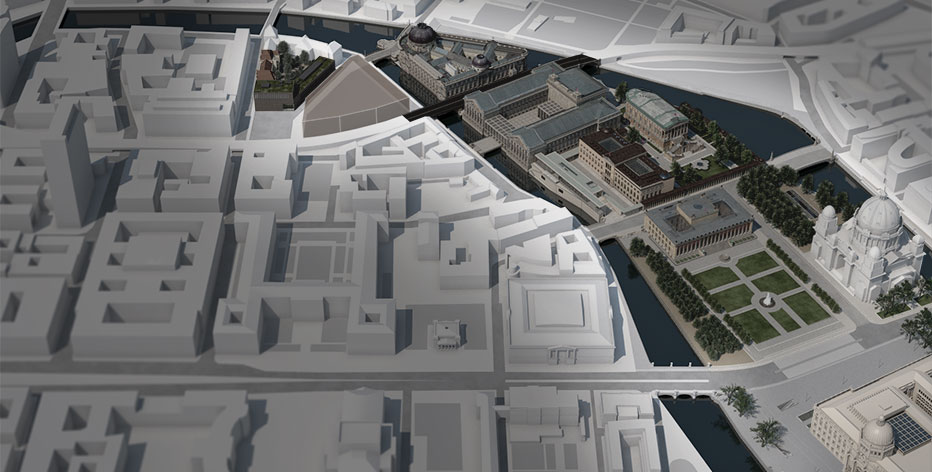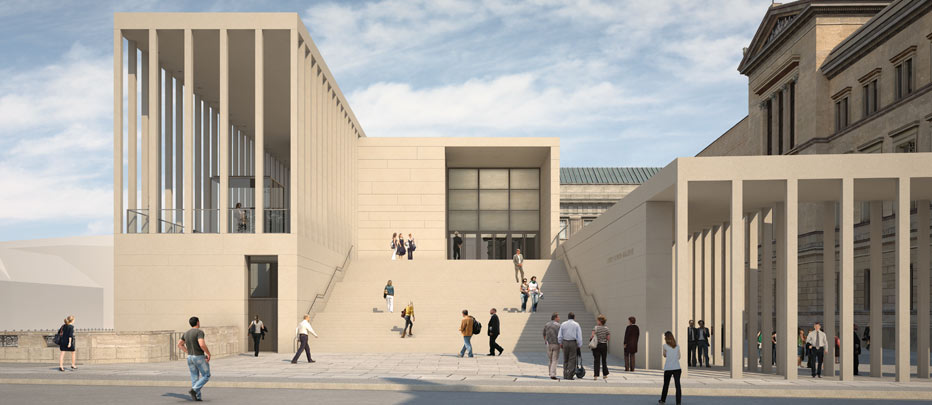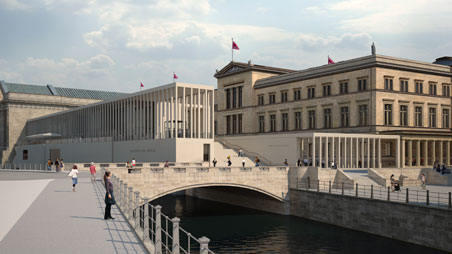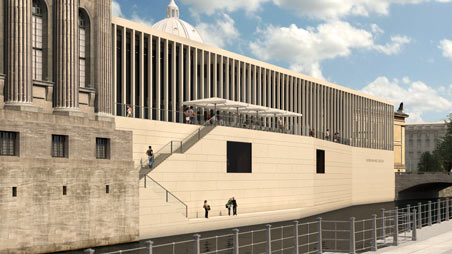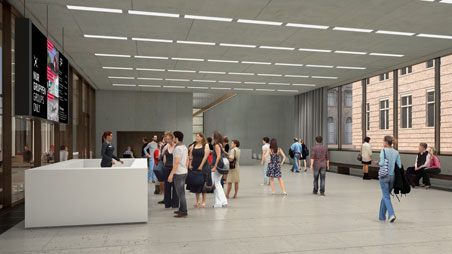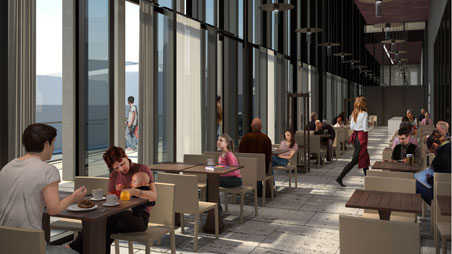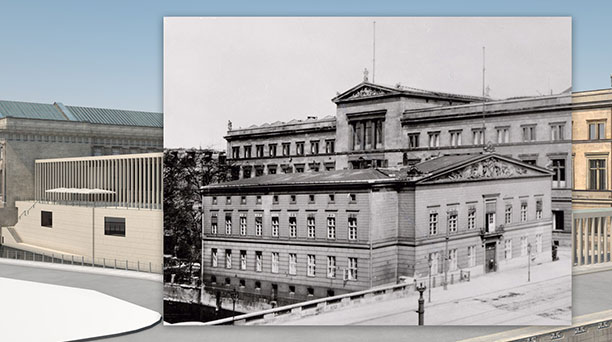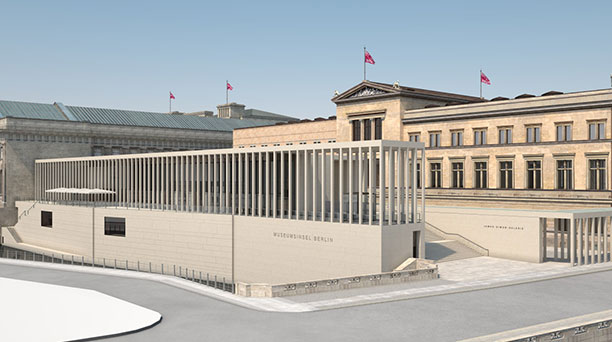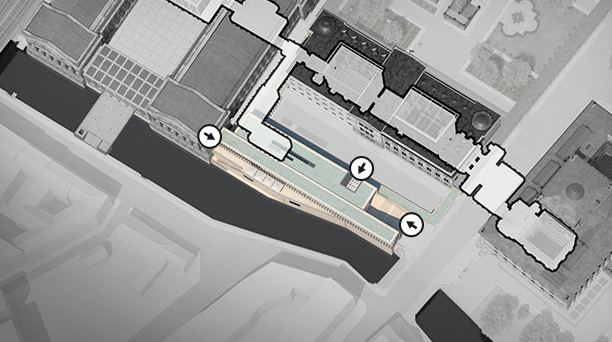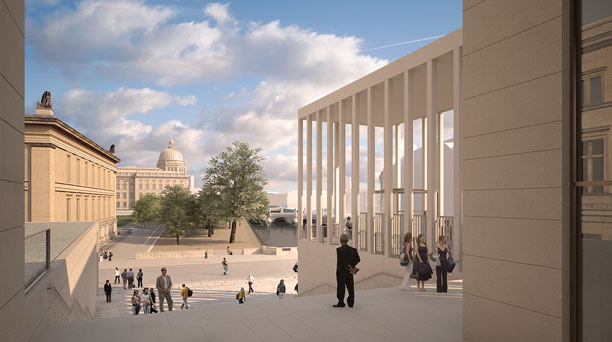The Museum Island Welcomes the World
Given the large number of visitors to the Museum Island, the James-Simon-Galerie is of crucial importance for the infrastructure of the museum complex. It will serve as the new entrance building offering the visitors guidance, information, and hospitality. It will assume central service functions for the Museum Island and thus relieve the strain on the historical exhibition venues.
In his design of the new building, architect David Chipperfield draws on the historical theme of Stüler’s colonnades. The sixth building on the Museum Island will thereby harmoniously blend in with the historical ensemble and at the same time set a modern accent on the Museum Island. The namesake of the new entrance building, James Simon, is one of the most important patrons in the history of the Staatliche Museen zu Berlin (National Museums in Berlin). His commitment to the arts and sciences is a shining example for modern patronage as well. The foundation stone for the James-Simon-Galerie was laid in fall 2013. The topping out ceremony was held in 2016.
